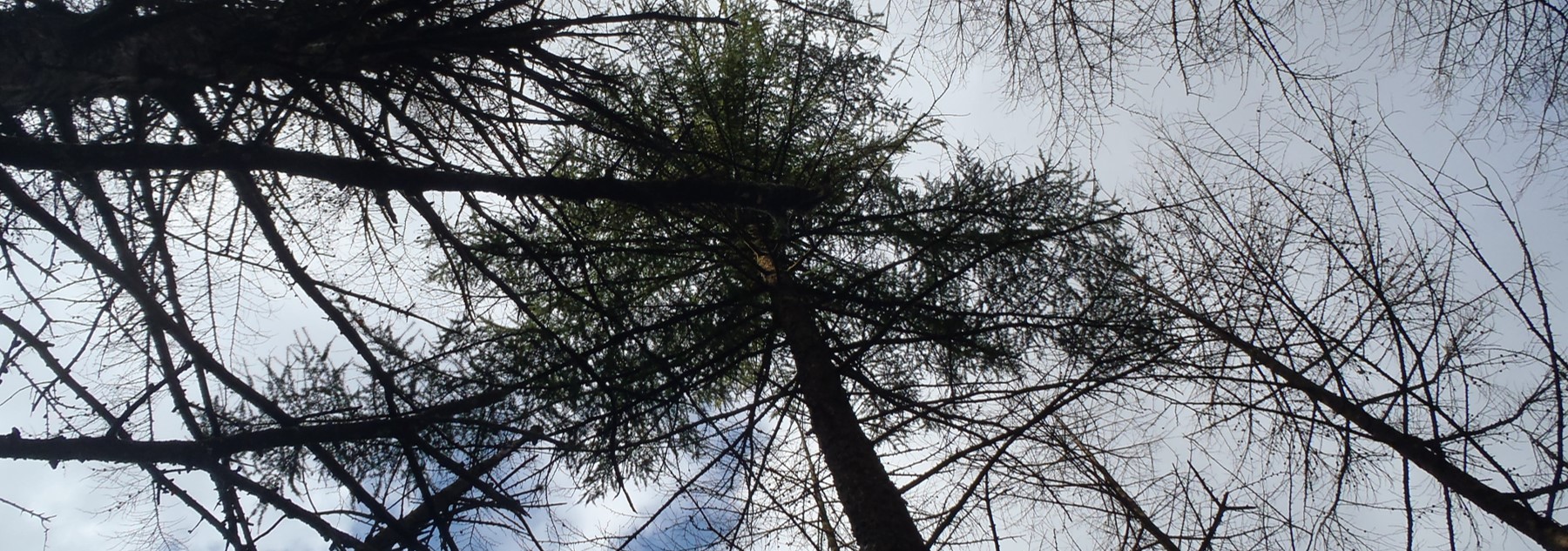Sudden Larch Death – an invasive tree killer and how you can do your bit to help
Authors: Sarah Green and Chris Quine, Forest Research
 Larch is the second most important forest timber species in Scotland (second to Sitka spruce) with approximately 66,000 Ha grown in the country. Its tolerance of wet, upland sites makes it particularly suited to Scottish west coast conditions. Not only is its tough, durable timber valued for decking, cladding and flooring, but the fact that it is deciduous, flushing to a vivid green in spring and turning a lovely golden yellow in autumn, makes it a visually attractive forest tree along road and rail corridors.
Larch is the second most important forest timber species in Scotland (second to Sitka spruce) with approximately 66,000 Ha grown in the country. Its tolerance of wet, upland sites makes it particularly suited to Scottish west coast conditions. Not only is its tough, durable timber valued for decking, cladding and flooring, but the fact that it is deciduous, flushing to a vivid green in spring and turning a lovely golden yellow in autumn, makes it a visually attractive forest tree along road and rail corridors.
Since 2013, however, many thousands of Scottish larch trees have been killed by Phytophthora ramorum, an invasive fungal-like pathogen which was almost certainly introduced into this country on infected imported plants. Once established within a forest, P. ramorum is almost impossible to eradicate as its spores can be dispersed aerially in wind and rain and it can live in the soil on needle litter.
Science has shed light on how P. ramorum spreads and infects larch in order to inform forest management practice. Millions of tiny airborne spores are produced on infected needles, which is why rapid felling of infected trees can help to slow down the spread of the epidemic. Although P. ramorum can kill more than 95% of larch trees in a single forest stand, some trees do remain healthy. Scientists are investigating whether these trees are resistant to the pathogen, which might allow for breeding of disease resistant stock. Studies have also shown how a wide range of garden shrubs such as Rhododendron, Viburnum, Camellia and Vaccinium can carry P. ramorum. Host plants such as these are inspected and sampled regularly at nurseries, with any infected stock destroyed.
Everyone has a role to play in helping to protect our forests from P. ramorum and related killers of trees. Scotland’s Plant Health Centre have launched a set of 5 Key Principles, which outline important steps to protect Scotland’s plant resources. These Principles include simple measures such as ‘Keep it Clean’- cleaning soil and plant debris from boots, bike tyres and dog paws before and after visiting forests, moors and woodlands prevents disease spreading to new sites. (see Scottish Forestry KEEP IT CLEAN campaign). Also ‘source plants with care’, always purchase plants from reputable garden centres and nurseries. Ask questions of the growers such as where do they source their plants? and how do they manage pests and diseases? Never be tempted to buy cheap discounted plants in poor health. To read more about these principles, please see the information booklet on the PHC website.
